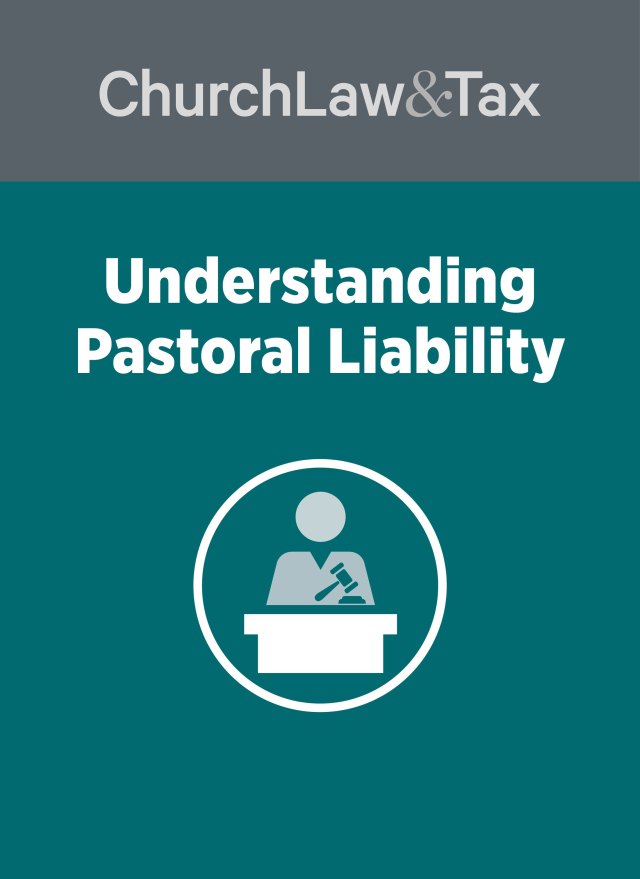Key point 10-16.4 — The statute of limitations specifies the deadline for filing a civil lawsuit. Lawsuits cannot be brought after this deadline has passed. There are a few exceptions that have been recognized by some courts: (1) The statute of limitations for injuries suffered by a minor begins to run on the minor’s eighteenth birthday. (2) The statute of limitations does not begin to run until an adult survivor of child sexual molestation “discovers” that he or she has experienced physical or emotional suffering as a result of the molestation. (3) The statute of limitations does not begin to run until an adult with whom a minister or church counselor has had sexual contact “discovers” that his or her psychological damages were caused by the inappropriate contact. (4) The statute of limitations is suspended due to fraud or concealment of a cause of action.
Summary: A Texas state appellate court affirmed a trial court’s decision to dismiss claims brought by a victim against his former church for the child abuse he suffered as a minor based on the acts of two priests.
Decades-old abuse claim involved sexual molestation
In 1978, an adult male (“Doe”) was a 16-year-old student at a Catholic school (“school”) in Dallas, Texas. The school’s president and its principal— both Jesuit priests— invited Doe and a friend (“G.L.”) to a religious retreat in Mobile, Alabama.
At this event, Doe was sexually molested by a priest. The priest got the student drunk and sexually assaulted him. Doe claimed he had no prior sexual experience and did not realize what had happened to him. Doe woke up and told G.L. what happened. Doe testified that after the assault, “I was so scared and then I went to go wake up G.L. to tell him what had happened and—and when I told him what happened and he didn’t believe me and I didn’t know what to think. I was scared. I was hurting, and I just wanted to go home.”
The two boys left Mobile “within a day or so” of the assault.
Shortly after returning to Dallas from Mobile, Doe’s family moved to Harlingen.
The offending priest was later transferred to an assistant pastor position in Shreveport, Louisiana, where he sexually assaulted more children. He was removed from the ministry in 1986.
Doe claimed that he “had absolutely no memory of what the priest had done to me from the time we left Mobile.”
In 2018, Doe was living in Corpus Christi, Texas. G.L. visited Corpus Christi, and he contacted Doe. They met for dinner and discussed their time at the school and the trip to Mobile. During that conversation, Doe remembered the priest’s sexual assault on him for the first time in 40 years.
TIP: Become an Advantage Member today to receive unlimited access to Church Law & Tax’s legal library, exclusive webinars, events, and content, and much more!
G.L. claimed when he was in Mobile in 1978, Doe told him that “he was uncomfortable with something that the priest had done to him.”
G.L. continued, “At the time, I didn’t think much of what he told me and I didn’t ask him any questions. Instead, I responded to [Doe] saying something along the lines that—‘these Jesuits are pretty demonstrative with their affection, don’t take it too seriously.’”
In 2018, Doe told G.L., “I tried to tell you about what the priest did to me when we were in Mobile.”… A few months later, G.L. saw the priest’s name on a list of “credibly accused” clergy. G.L. reported the priest’s sexual assault of Doe to the school’s president. Doe sued the school and the Catholic Society of Religious and Literary Education (the “church defendants”).

4-Part Series: Expanding Abuse Victims’ Rights and What It Means for Churches
Child abuse scandals continue to garner widespread media attention as well as the attention of lawmakers nationwide. As more victims come forward, often years or decades after suffering alleged abuses, they learn their state’s statute of limitations prevents them from seeking damages from the perpetrator…
Evidence revealed the defendants in the decades-old abuse claim knew as early as January 1975 about the priest’s sexual abuses. The evidence also revealed the defendants intervened to stop an investigation, and acted to keep the information from becoming public.
Letters between the defendants in December 1977 discuss the priest’s history “of overt homosexual encounters with two high school boys.”
The church defendants took no action “on the supposition that the condition had been brought under control.” However, a few weeks later the priest made sexual advances toward a 14-year-old boy.
Doe sued the church defendants on March 14, 2019, almost 41 years after the incident. Doe identified the following bases of liability:
1. Respondeat superior and other types of agency (a principal is responsible for the acts of its agents committed within the scope of agency).
2. The church defendants were negligent by:
- failing to report to the police and other authorities the priest’s known sexual assaults of children,
- assigning the priest to locations where children were located, knowing he had sexually assaulted children,
- failing to investigate the priest’s known sexual assaults of children, and
- failing to have written policies in place regarding sexual assaults.
3. The church defendants were negligent by retaining the priest and failing to properly supervise him when they knew or should have known he had abused children.
4. The church defendants were in a special fiduciary relationship with Doe which they breached “by subjecting him to … a known pedophile.”
5. The church defendants violated their fiduciary duties by failing to disclose “the extent of the problem of sexual abuse of children by the Roman Catholic clergy.”
The church defendants filed a motion for summary judgment as a matter of law, arguing Doe’s decades-old abuse claim was barred by the applicable statute of limitations in Texas. In Texas, civil lawsuits must be filed within two years of the date of an injury.
The trial court granted the defendants’ motion and dismissed Doe’s claims.
Doe files an appeal
Doe appealed the trial court’s decision.
The appellate court first explained the purpose of the statute of limitations, citing a prior state supreme court decision:
Limitations statutes afford plaintiffs what the legislature deems a reasonable time to present their claims. They also protect defendants and the courts cases where the search for truth may impaired by the loss of evidence. Loss of evidence can come from the death or disappearance of witnesses, fading memories, disappearance of documents or otherwise. The purpose of a statute of limitations is to establish a point of repose and to terminate stale claims. Murray v. San Jacinto Agency, Inc., 800 S.W.2d 826 (Tex. 1990).
The appellate court then noted that a statute of limitations “begins to run when a cause of action accrues” and that under the “legal injury rule,” a cause of action accrues “when a wrongful act causes some legal injury, even if the fact of injury is not discovered until later and even if all resulting damages have not yet occurred.”
In this case, “the priest’s assault on Doe occurred in August 1978. Doe was sixteen at the time, so the limitations period did not begin to run until Doe turned eighteen in 1980. … The limitations period was two years. Thus, limitations expired in 1982, two years after Doe turned eighteen, unless accrual of Doe’s causes of action was deferred or the running of the limitations period was tolled.
Doe failed to establish elements of discovery rules
Doe acknowledged that he did not file his lawsuit within two years from the date of injury and therefore the statute of limitation potentially barred his legal claims against the church defendants. However, Doe insisted that the discovery rule applied and deferred the accrual of his decades-old abuse claim until he remembered the assault in 2018.
The appellate court noted that the “discovery rule” is an exception to the general rule that a cause of action accrues at the time of the injury, deferring the accrual of a cause of action ”until the plaintiff knew or, exercising reasonable diligence, should have known of the facts giving rise to the cause of action.”
The court noted that it applied the discovery rule “only when the nature of plaintiff’s injury is inherently undiscoverable and the evidence of injury is objectively verifiable.”
The court concluded that Doe failed to establish these elements. As a result, the discovery rule did not extend the limitation period beyond two years.
What this means for churches
Many states have adopted a “discovery rule” that suspends the statute of limitations in sexual abuse cases until the victim “discovers, or with reasonable diligence should have discovered, the injury.”
The discovery rule potentially exposes churches to the possibility of a decades-old abuse claim.
Although the appellate court affirmed the trial court’s decision that such an exception did not apply to Doe’s specific claims, church leaders still must note this possible exception to their respective state’s statute of limitations. Furthermore, many states are extending the periods of time for civil claims involving child sexual abuse to be brought or abolishing the statute of limitations for child sexual abuse claims altogether.
There are some important considerations for leaders to especially note:
1. Churches to should keep church insurance policies permanently. That’s because a decades-old abuse claim may require a church to produce a copy of the insurance contract for the year the misconduct happened. In many cases, churches are unable to do so, and face a potentially sizable uninsured risk.
2. To invoke the discovery rule, an adult survivor of childhood sexual abuse must demonstrate that they had no prior knowledge connecting the abuse with the perpetrator. This can be a challenge because it often requires the victim to describe the injury and its effect without realizing that, in doing so, the availability of the discovery rule may be compromised. As the court in this case noted: “Because Doe ceased to remember the assault almost immediately, he could not have told his parents or anyone else.”
3. In recent years, several states have abolished the statute of limitations in child sex abuse cases. This development underscores the need for churches to retain permanently all liability insurance policies.
4. The court cited the following facts that help corroborate allegations of abuse: “A confession by the abuser; a criminal conviction; contemporaneous records or written statements of the abuser such as diaries or letters; medical records of the person abused showing contemporaneous physical injury resulting from the abuse; photographs or recordings of the abuse; an objective eyewitness’s account. …”
5. When shopping for church insurance, church leaders should carefully examine policies for sex abuse coverage. Many insurance policies omit coverage for sex abuse claims involving minors or limit it significantly. Additional coverage for sexual abuse and sexual misconduct may need to be purchased.
Doe v. Jesuit College Preparatory School, 2022 WL 2352953 (Tex. App. 2022)


